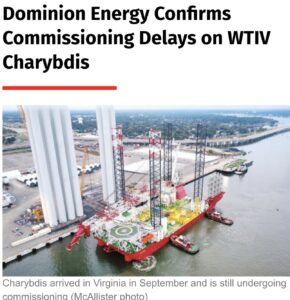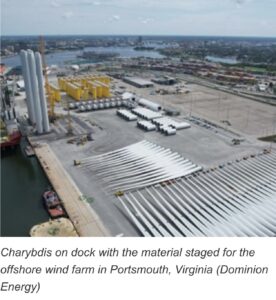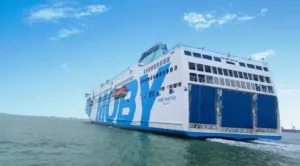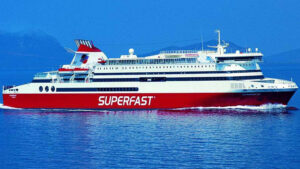Where has the US Commercial Shipping Industry disappeared
The US Navy and US Maritime Administration will have to justify why it is so prolific in spending on naval ships rather then building US merchant navy fleet. What is really being protected by the US Navy needs an in depth study. Is the US Navy protecting a meagre number of US cargo ships, exclusive economic zones, guarding against illegal fishing ,offshore hydrocarbons, undersea minerals, offshore wind installations, undersea fiber optic cables, drug and human trafficking or maintaining its maritime corridors. The US merchant navy comprises of around 175 ocean going and self propelled ships of more then 10000 GRT. This figure is abysmally low when considering that the global merchant fleet comprises around 43,000 ships. The US military lacks sufficient “ sealift “ capacity which is vital in the event of a prolonged maritime crisis and also to augment its oversea military strike and deployment capability. The US has only one shipyard left involved in construction of civilian vessels and is exposed to supply chain vulnerabilities.

 Credit; Dominion Energy/Maritime Executive
Credit; Dominion Energy/Maritime Executive
The WTIF is unique as its the first Jones Act-compliant vessel of its kind built in and regulated in the United States at the Seatrium AmFELS yard in Brownsville, Texas. The total investment reported to have been made in in the Coastal Virginia project is almost $ 8.2 billion representing a strategic advantage which translates to cost certainty for the offshore wind energy project.
China has a huge shipbuilding industry
 Credit;rina.org.uk
Credit;rina.org.uk
China on the other hand constructs over 1000 ocean going ships on an annual basis. China has already acquired stakes in many of the large container terminals worldwide. If the US Navy shifts towards drone surveillance and unmanned crafts as first responders the burden on the economy is likely to be lessened. Another significant advantage of enhancing commercial fleet for the U.S. Navy is that it can use commercial containerships and compatible containerized missile systems and sensor technology.Littoral states such as Iran are constrained to deploy Container hulls which can accommodate relatively large mission payloads as a small part of the container ship’s capacity.Commercial ships can support naval logistics in times of hostilities and serve as hospitals, decoys and store weapons and payloads. A comparative analysis of costs of US Naval ships and US commercial ships, obtained from various open access sources, is depicted below ;
Costs of Commercial Ships
300-metre containership $130 million
Evergreen’s 24,000 TEU LNG powered Container Ship $ 267 Million
30000-deadweight products tanker $50 million
Newbuild prices
$81.0 million for VLCCs
$53.0 million for Suezmax
$43.0 million for Aframax
$145 million largest container ships
$ 100 million Crude Oil Tanker
Big bulk carriers $60 million (simple construction requirements ) to construct half the price of a large container ship
$ 95 million Very Large Crude Carrier between 200,000 to 320,000 DWT (double hull if run aground )
$ 190 million LNG Tankers (Specialist product carriers)
$ 240 million transport ship (Boka Vanguard transports offshore oil platforms weighing 110,000 tonnes)
$ 1 billion Cruise ship of 2000-3000 passenger capacity (accommodation desks above waterline )
$ 80 million for car carrier (17,000 tonnes)
$ 7.5 million ASD terminal/escort tug (length 32 metres , 2 Caterpillar 2,350kW main engines, delivers speed of 13 knots and bollard pull of 75 tonnes)
$ 36 million state-of-the-art trailing suction hopper dredge (Damen Dutch shipbuilders )
$ 54 million to 89 million RO Ferry of 500 DWT and 440 passengers
$ 715 million for Wind turbine installation vessel (WTIV) which is 472 feet long, 27,000 gross tons, 40-meter (131-foot) air gap under the hull and its crane has a 2,200-ton capacity
Naval Ships
$ 1.2 billion cost guided missile frigate US Navy
$ 13 billion US Gerald R. Ford Aircraft Carrier
$736 million 742-feet vessel full load displacement of
49,850 tons capacity to carry 157,000 barrels of oil
$ 3.8 billion French “ Le Terrible “ submarine
$1.35 billion French Barracuda submarine
$ 1 billion Spanish Destroyer (5000 tons)
$ 640 million US Corvette/Cutter (4000 tonnes)
The US Coast Guard acquired a 360-foot polar class 3-equivalent icebreaker to enhance U.S. operational presence in the Arctic with a $ 125 million firm fixed-price contract which includes delivery, reactivation, technical data, spares, certifications, modifications, crew training and operational readiness activities. The US Coast Guard requires a fleet of eight to nine polar icebreakers to meet operational needs in polar regions.
Six 212 Common Design submarines from ThyssenKrupp purchased at US $ 5.7 billion.
Pakistan’s first commercial cargo ship in 40 years at the Karachi Shipyard & Engineering Works is an 1,100 TEU containership project valued at $ 24.75 million
Renewed Interest Coastal Ferry RO RO Ships
 Credit;Lloyds.List
Credit;Lloyds.List
The cost of a 71-metre roll-on-roll-off (RORO) passenger cargo ferry designed for inter coastal and island routes is in the range of USD $ 20 million. Such a ferry would have a steel monohull design , an aluminium superstructure accommodating up to 140 seated passengers and 17 crew, featuring a main cargo deck area of 494 sqm capable of transporting a combination of 10’ and 20’ containers, palletised cargo and vehicles . Its cruising speed would be in the range of 12 knots and a range of 1,000 Nm .
China’s Ferry Cruise Shipbuilding Industry
The RO-paxes are cheaper to construct than cruise ferries. The 68,460 gt Finnsirius of Finnlines cost was USD $ 135 and Viking Line’s two-year-old, 65,211 gt cruise ferry Viking Glory cost was USD $ 205 million. The Viking Line ship can accommodate 2,800 passengers, all berthed while the Finnlines vessel has a capacity of 1,100. Both ships were manufactured in Chinese shipbuilding yards. If ferry lines want to compete with the airlines they will have to offer a type of transport that is actually part of the holiday.
Author ; Nadir Mumtaz
Trademark Blue Economy IPO-PK
Credit /Sources ;
https://rina.org.uk/publications/the-naval-architect/are-ro-pax-ferries-the-new-cruise-ferries/
https://workboat365.com/austal-vietnam-awarded-contract-for-71-metre-roro-passenger-cargo-ferry/
https://www.lloydslist.com/LL1144512/Attica-agrees-to-buy-roro-from-CLdN-Ferries-for-134m
http://DOI:10.1515/revecp-2015-0010


Leave A Comment